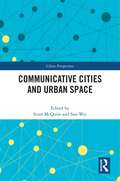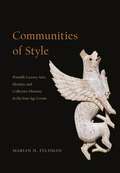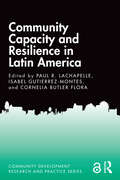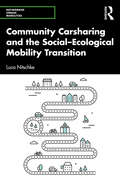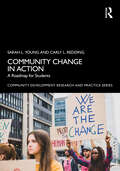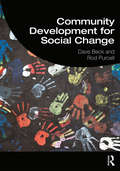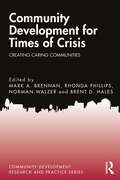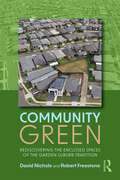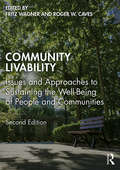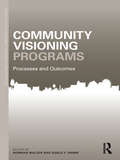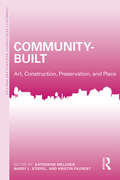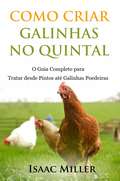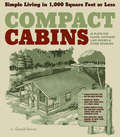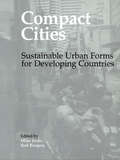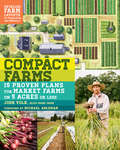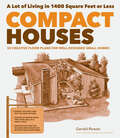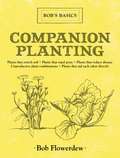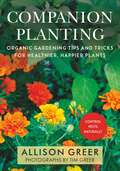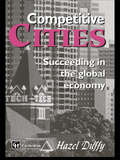- Table View
- List View
Communicative Cities and Urban Space (China Perspectives)
by Scott McQuireCities have long been recognized as key sites for fostering new communication practices. However, as contemporary cities experience major changes, how do diverse inhabitants encounter each other? How do cities remember? What is the role of the built environment in fostering sites for public communication in a digital era? Communicative Cities and Urban Space offers a critical analysis of contemporary changes in the relation between urban space and communication. This volume seeks to understand the situatedness of contemporary communication practices in diverse contexts of urban life, and to explore digitized urban space as a historically specific communicative environment. The essays in this book collectively propose that the concept of the ‘communicative city’ is a productive frame for rethinking the above questions in the context of 21st-century ‘media cities’. They challenge us to reconsider qualities such as openness, autonomy and diversity in contemporary urban communication practices, and to identify factors that might expand or constrict communicative possibilities. Students and scholars of communication studies and urban studies would benefit from this book.
Communities of Style: Portable Luxury Arts, Identity, and Collective Memory in the Iron Age Levant
by Marian H. Feldman"Communities of Style"aexamines the production and circulation of portable luxury goods throughout the Levant in the early Iron Age (1200OCo600 BCE). In particular it focuses on how societies in flux came together around the material effects of art and style, and their role in collective memory. Marian H. Feldman brings her dual training as an art historian and an archaeologist to bear on the networks that were essential to the movement and trade of luxury goodsOCoparticularly ivories and metal worksOCoand how they were also central to community formation. The interest in, and relationships to, these art objects, Feldman shows, led to wide-ranging interactions and transformations both within and between communities. Ultimately, she argues, the production and movement of luxury goods in the period demands a rethinking of our very geo-cultural conception of the Levant, as well as its influence beyond what have traditionally been thought of as its borders. "
Community Capacity and Resilience in Latin America (Community Development Research and Practice Series)
by Cornelia Butler Flora Paul R. Lachapelle Isabel Gutierrez-MontesCommunity Capacity and Resilience in Latin America addresses the role of communities in building their capacity to increase resiliency and carry out rural development strategies in Latin America. Resiliency in a community sense is associated with an ability to address stress and respond to shock while obtaining participatory engagement in community assessment, planning and outcome. Although the political contexts for community development have changed dramatically in a number of Latin American countries in recent years, there are growing opportunities and examples of communities working together to address common problems and improve collective quality of life. This book links scholarship that highlights community development praxis using new frameworks to understand the potential for community capacity and resiliency. By rejecting old linear models of development, based on technology transfer and diffusion of technology, many communities in Latin America have built capacity of their capital assets to become more resilient and adapt positively to change. This book is an essential resource for academics and practitioners of rural development, demonstrating that there is much we can learn from the skills of self-diagnosis and building on existing assets to enhance community capitals. Chapter 3 of this book is freely available as a downloadable Open Access PDF at http://www.taylorfrancis.com under a Creative Commons Attribution (CC-BY) 4.0 license.
Community Carsharing and the Social–Ecological Mobility Transition (Networked Urban Mobilities Series)
by Luca NitschkeThis book investigates how practices of community carsharing are influencing everyday mobility. It argues that hegemonic practices of automobility are reconfigured through practices of community carsharing, thereby challenging capitalist mobilities in the realm of everyday life. Through a detailed empirical study of practices of community carsharing and its practitioners in the rural regions around Munich, Germany, this book reveals how the practice contributes to the emergence of alternative automobile practices, meanings, identities and subjectivities. It also explores the embedding of automobility into its ecological context, the connection of function and community in practices of community carsharing and the changing of ownership relations through a process of commoning mobility. This reconfiguration of everyday practices of automobility takes place through processes of everyday resistance, re-embedding and commoning, and ultimately results in the emergence of an alternative mobility culture, thereby facilitating the dissemination of an alternative common sense of community carsharing. This book on community carsharing provides a valuable insight into carsharing in rural settings and exemplifies how carsharing specifically, and sharing mobilities in general, can contribute to a social–ecological mobility transition. The work will be of particular interest to scholars and practitioners working in mobility studies and mobilities.
Community Change in Action: A Roadmap for Students (Community Development Research and Practice Series)
by Sarah L. Young Carly L. ReddingCommunity Change in Action guides students through the process of turning their personal passion into goal-driven action for community development. Using an evidence-based curriculum, the book breaks down exactly how to initiate and drive social change in a way that speaks to the unique characteristics of Generation Z (Gen Z).Each chapter provides step-by-step actions, analyzes real-life examples, and supplies the necessary tools for success. The authors' multiple decades of experience leading students in community development, both in the United States and abroad, spawn a rich and engaging source for these examples. Each step is highlighted through Gen Z's narrated examples of using the guide and the associated toolkits to implement major social change initiatives, from Native American reservations to the slums of India and beyond.This book takes best practice approaches to youth leadership, community development, and social change beyond the classroom, inspiring and illustrating how Gen Z students can take their passion and turn it into social action.
Community Development for Social Change
by Dave Beck Rod PurcellCommunity Development for Social Change provides a comprehensive introduction to the theory and practice of community development and associated activities, discusses best practice from global experience and links that to the UK context. The book integrates the realities of practice to key underpinning theories, human rights, values and a commitment to promoting social justice. A range of practice models are described and analysed, including UK models, popular education and community organising, as well as a range of practice issues that need to be understood by community development workers. For example, strategies to promote individual and community empowerment, challenging discrimination, building and sustaining groups, and critical reflection on practice. Finally, a range of case studies from the UK and overseas illustrates good practice in diverse contexts. These case studies are analysed with reference to the values of community development, the promotion of social justice and the underpinning theories. It is an essential text for those on community development courses as well as for a range of workers, including local government, national and local voluntary agencies, and community-based organisations.
Community Development for Times of Crisis: Creating Caring Communities (Community Development Research and Practice Series)
by Mark A. BrennanThis book explores the intersection of community development and local capacity building as a basis for effective disaster mitigation and the alleviation of suffering in times of crisis. Beginning with the Community Development section, the process, context, and methods for community, engagement, and development can be viewed from different structural and logical approaches. This section explores some of the more relevant historical arguments, as well as more contemporary examinations. The second section looks at Critical Human and Community Considerations and sheds light on some of the key concepts that are often overlooked (poverty, race, inequality, social justice, mental health, social division) when framing community responses to disaster. The third section focuses on Fundamental Elements of Caring Communities. This section explores the importance, practical, and measurable impacts of social support, empathy, inclusion, and conflict resolution in creating effective and caring community responses. Finally, the last section focuses on practice and brings together research and theory into applied programming, examples, and evidence from on-the-ground efforts to establish caring communities that respond to local needs in times of crisis and beyond. By addressing these objectives, this book provides a more complete understanding of the essential role that community can play in disaster mitigation. Doing this will provide a better focus for ongoing research endeavors, and program and policy initiatives at the community level that seek to prepare for, respond to, and recover from natural and other disasters. As a result, this book contributes to wider and more sustainable development of our communities beyond disasters, while furthering dialog among community scholars and practitioners.
Community Green: Rediscovering the Enclosed Spaces of the Garden Suburb Tradition
by David Nichols Robert FreestoneNeighbourhood open space ranks highly as a key component in suburban liveability assessments, originating from the development of urban planning as a profession and the proliferation of the garden suburb. Community Green uniquely connects the past, present and future of planning for small open spaces around the narrative of internal reserves.The distinctive planned spaces are typically enclosed on every side, hidden within residential blocks, serving as local pocket parks and reflecting the evolving values of community life from the garden city movement to contemporary new urbanism. This book resuscitates the enclosed, almost secretive reserve from history as a distinctive form of local open space whose problems and potentialities are relevant to many other green community spaces. In so doing, it opens up even wider connections between localism and globalism, the past and the future, and for connecting community initiatives to broader global challenges of cohesion, health, food, and climate change. This fully illustrated book charts the outcomes and implications of this evolution across several continents, injecting human stories of civic initiatives, struggles and triumphs along the way.Community Green will be of interest to a wide readership interested in studying, managing and improving the quality of all small open spaces in the urban landscape.
Community Livability: Issues and Approaches to Sustaining the Well-Being of People and Communities
by Fritz Wagner Roger W. CavesWhat is a livable community? How do you design and develop one? What does government at all levels need to do to support and nurture the cause of livable communities? Using a blend of theory and practice, the second edition of Community Livability addresses evidence from international, state and local perspectives to explore what is meant by the term "livable communities." The second edition contains new chapters from leading academics and practitioners that examine the various factors that constitute a livable community (e.g., the influence and importance of transportation options/alternatives to the elderly, the importance of walkability as a factor in developing a livable and healthy community, the importance of good open space providing for human activity and health, restorative benefits, etc., the importance of coordinated land use and transportation planning), and the relationship between livability and quality of life. A number of chapters focus on livable communities with case studies from an international perspective in USA, Canada, Australia, Peru, Sweden, South Korea, Japan, and Austria.
Community Visioning Programs: Processes and Outcomes (Community Development Research and Practice Series)
by Norman Walzer Gisele F. HammCommunity visioning is key in helping local public officials and community leaders create a flourishing future for their cities, and is essential for the effective planning and implementation of these strategies. Visioning involves collaborative goal setting to motivate actions – of planners, citizens, and officials – in order to design and carry out a strategic planning process for the successful development of the community. The use of visioning since the 1980s has led to a wealth of information on the productivity of the paths it has taken. The contributors, all with experience working in the area, review the successes and failures of the strategies, and look at new innovations which are pushing the frontiers of community visioning. This review of the development of visioning focuses on small and medium sized communities in North America. It aims to guide citizens, local leaders and planners on what strategies are best to help them revitalise their communities and ensure a prosperous future.
Community-Built: Art, Construction, Preservation, and Place (Community Development Research and Practice Series)
by Barry Stiefel Katherine Melcher Kristin FaurestThroughout history and around the world, community members have come together to build places, be it settlers constructing log cabins in nineteenth-century Canada, an artist group creating a waterfront gathering place along the Danube in Budapest, or residents helping revive small-town main streets in the United States. What all these projects have in common is that they involve local volunteers in the construction of public and community places; they are community-built. Although much attention has been given to specific community-built movements such as public murals and community gardens, little has been given to defining community-built as a whole. This volume provides a preliminary description of community-built practices with examples from the disciplines of urban design, historic preservation, and community art. Taken as a whole, these community-built projects illustrate how the process of local involvement in adapting, building, and preserving a built environment can strengthen communities and create places that are intimately tied to local needs, culture, and community. The lessons learned from this volume can provide community planners, grassroots facilitators, and participants with an understanding of what can lead to successful community-built art, construction, preservation, and placemaking.
Community-Engaged Interior Design: An Illustrated Guide
by Travis Lee HicksThis step-by-step guide takes the reader through each stage of the design process, from concept to completion, exploring practical methods of how to engage the community throughout interior architecture and design projects. This book argues that all design should be accomplished through a process of engagement, be it with community members, clients, or end users. The community-engaged designer welcomes participatory processes, mutually beneficial collaboration, and equitable inclusion in order to meet the needs and wants of diverse groups of people. Chapters cover the initial engagement of communities, marketing, and pre-design phases, translating research into a design scheme in development with the community, communicating designs, engaging community-based makers, craftspeople, product manufacturers, vendors, and distributors, constructing designs, and evaluating the end result. Finally, case studies of successful community-engaged design projects are presented and analyzed to demonstrate this approach in action. Learning objectives, chapter summaries, and exercises help to ease understanding and build design thinking and technical skills, equipping the reader with the tools to succeed as a community-engaged designer. Hicks distills years of experience teaching community-engaged design within this volume, which will be a valuable resource for all interior architecture and design students and practitioners.
Como Criar Galinhas no Quintal: O Guia Completo para Tratar desde Pintos até Galinhas Poedeiras
by Isaac Miller Anabela SousaCriar galinhas no quintal é muito mais simples do que você possa pensar, e são muito mais simples de manter do que outros animais de estimação. Bastará controlar as suas galinhas durante uns minutos por dia, e em pouco tempo, você deverá estar recolhendo ovos frescos diários. Neste livro, iremos rever os passos necessários, desde obter e cuidar dos pintos, fazer a transição das suas galinhas de quintal para um galinheiro exterior, e o que esperar pelo meio. Agarre numa bebida e em qualquer coisa para comer, descubra um lugar confortável para se sentar, e juntos vamos descobrir o prazer que as galinhas de quintal podem proporcionar. Neste livro veremos consigo: Espaço Necessário e Tamanho do Galinheiro Escolher uma Raça de Galinha Como Cuidar dos Pintos Quando os deve levar para o Galinheiro Mantendo o Galinheiro e o Cercado Limpos Como Alimentar as Galinhas Tenha uma vida alegre com este livro e os seus novos amigos.
Como Organizar Sua Casa e Mente: A Arte de Arrumar, Limpar e Remover Bagunças de Sua Vida
by Beatriz dos Santos Maranho Mary AlbrichVoce sente como se seus esforcos para manter sua casa ou espacos pessoais organizados sao ineficazes? Mary eleva os parametros de limpeza e organizacao com sue novo livro. Este guia detalhado é um método rápido, fácil e eficiente para limpar sua casa ou espaços pessoais. Esses passos permitirão que você remova a desordem interminável da sua vida, limpe sua mente e torne-se mais eficiente, sentindo-se menos estressado e mais feliz!
Compact Cabins: Simple Living in 1000 Square Feet or Less; 62 Plans for Camps, Cottages, Lake Houses, and Other Getaways
by Gerald RowanIn the woods, on a mountaintop, or at the water&’s edge, a small cabin can fulfill big dreams. With attention to efficient living and minimizing energy footprints, Gerald Rowan provides 62 designs for compact and creative buildings that are flexible enough to fit whatever your needs may be. Rowan includes detailed floor plans with plenty of modular elements that make the designs adaptable and easy to recreate with cost-effective, low-maintenance materials. Make the most of the cabin you call home, regardless of its size.
Compact Cities: Sustainable Urban Forms for Developing Countries
by Mike Jenks Rod BurgessThis collection of edited papers forms part of the Compact City Series, creating a companion volume to The Compact City (1996) and Achieving Sustainable Urban Form (2000) and extends the debate to developing countries. This book examines and evaluates the merits and defects of compact city approaches in the context of developing countries in Africa, Asia and Latin America. Issues of theory, policy and practice relating to sustainability of urban form are examined by a wide range of international academics and practitioners.
Compact Farms: 15 Proven Plans for Market Farms on 5 Acres or Less; Includes Detailed Farm Layouts for Productivity and Efficiency
by Josh VolkSmall is beautiful, and these 15 real farm plans show that small-scale farmers can have big-time success. Compact Farms is an illustrated guide for anyone dreaming of starting, expanding, or perfecting a profitable farming enterprise on five acres or less. The farm plans explain how to harness an area&’s water supply, orientation, and geography in order to maximize efficiency and productivity while minimizing effort. Profiles of well-known farmers such as Eliot Coleman and Jean-Martin Fortier show that farming on a small scale in any region, in both urban and rural settings, can provide enough income to turn the endeavor from hobby to career. These real-life plans and down-and-dirty advice will equip you with everything you need to actually realize your farm dreams.
Compact Houses: 50 Creative Floor Plans for Well-Designed Small Homes
by Gerald RowanDiscover the huge possibilities of a small house! Whether you’re building from scratch or retrofitting an existing structure, these 50 innovative floor plans will show you how to make the most of houses measuring 1,400 square feet or less. Gerald Rowan presents creative and efficient layouts that use every inch of space, with tips on fully maximizing closets, porches, bathrooms, attics, and basements. From reorganizing a small storage area to building a brand-new home, you’ll find a detailed design to fit your family’s needs.
Companion Planting for Beginners: Pair Your Plants for a Bountiful, Chemical-Free Vegetable Garden
by Brian LowellIf you want a vibrant, chemical-free vegetable garden, companion planting is the solution.Did you know tomatoes produce a natural insecticide that can help protect carrots against pests? Or that planting mint near lettuce can repel slugs? Every gardener knows that the key to an abundant harvest in their vegetable garden is controlling pests and disease, while still maintaining a healthy growing environment. But it is possible to have a healthy, thriving vegetable garden without using dangerous chemicals? It is, as long as you know how to pair up the right plants. Organic gardeners have known for years that planting the right plants together is the key to minimizing pests, improving soil quality, and increasing the yield of their gardens, and almost any vegetable you can grow likely has a beneficial companion. Companion planting is the ideal way to avoid using chemicals, while still increasing the efficiency of your garden. Expert organic gardener Brian Lowell will teach you how to use plants to create a beautiful, vibrant vegetable garden that will be free of toxic chemicals. Here's what you'll find inside:Handy companion planting pairings for all of the most common garden vegetablesPractical, simple photography and colorful illustrations for dozens of beneficial planting configurations Expert advice from a master gardener that is specifically designed for beginnersLoads of troubleshooting tips for fixing common issues with companion-planted gardensTips for setting up the perfect vegetable garden, including practical advice on watering, soil management, troubleshooting, and more
Companion Planting for the Kitchen Gardener: Tips, Advice, and Garden Plans for a Healthy Organic Garden
by Allison GreerCompanion planting techniques have been used for centuries to facilitate better, more nutritious, and more abundant crops. Did you know that beets will grow better if surrounded by mint or garlic, but tomatoes should not be planted near cabbage? Flax helps protect some root vegetables from pests, and tomatoes will thrive when planted near carrots (though the carrots may wind up stunted). Your celery will be happier if it's far away from corn, but broccoli and dill make a terrific garden pair. It's a lot to think about, but there's no reason to feel overwhelmed. With Companion Planting for the Kitchen Gardener, you'll have all the information you need in clear, concise terms and with charts and garden plans you can copy or modify to suit your family's needs.Starting with the basics of organic gardening, such as how to prepare quality soil and the importance of cover crops and organic fertilizer, authors Allison and Tim Greer explain the principles of companion planting, how plants interact, and how you can use that information to your garden's benefit. There is an entire chapter devoted to each of the fifteen most popular vegetables, with charts, diagrams, and descriptions of each-a treasure for gardeners with busy lives who want an easy reference guide for planning their ideal kitchen garden. Full of gorgeous, full-color photographs and easy-to-follow diagrams, this is a beautiful, useful guide for the home organic gardener.
Companion Planting: Bob's Basics (Bob's Basics)
by Bob FlowerdewAccording to Flowerdew, the key to successful organic gardening is working with nature, rather than against it, to get your plants to thrive. This practice is called companion planting, and it is explained in this volume with a style that is both no-nonsense and reader-friendly. Topics range from plants that compete for nutrients to plants that enrich their soil for future crops. Gardeners of all levels will learn from Companion Planting and their gardens will benefit from happy and healthy plants.
Companion Planting: Organic Tips and Tricks for Healthier, Happier Plants
by Allison GreerA Practical and Beautiful Guide to Companion Planting for Organic Gardening SuccessCompanion planting techniques have been used for centuries to facilitate better, more nutritious, and more abundant crops. With Companion Planting, you’ll have all the information you need in clear, concise terms and with charts and garden plans you can copy or modify to suit your family’s needs.Starting with the basics of organic gardening, such as how to prepare quality soil and the importance of cover crops and organic fertilizer, author Allison Greer explains the principles of companion planting, how plants interact, and how you can use that information to your garden’s benefit. Fun companion planting facts include:Beets will grow better if surrounded by mint or garlicTomatoes should not be planted near cabbageFlax helps protect some root vegetables from pestsTomatoes will thrive when planted near carrotsYour celery will be happier if it’s far away from cornBroccoli and dill make a terrific garden pairAnd much, much more!Companion Planting is a treasure for gardeners with busy lives who want an easy reference guide for planning their ideal kitchen garden.
Competitive Cities: Succeeding in the Global Economy
by Hazel DuffyCompetitive Citites is an assessment of the way in which `partnership', a word much used by politicians, has helped to shape the economic futures of four cities on both sides of the Atlantic - Atlanta, Toronto, Birmingham and Rotterdam.
Complete Do-it-Yourself Manual Newly Updated
by Editors Of Family HandymanThe leading manual for home improvements is getting an update to address current codes, latest materials, tools and technology.The bestselling, most comprehensive guide to home improvements has been revised and updated once again since it's revision in 2005. Over 10 million copies of READER'S DIGEST COMPLETE DO-IT-YOURSELF MANUAL have been sold since it's original publication in 1973. In 2005, the manual got bigger and better than ever, when The Family Handyman and Reader's Digest joined forces and completely revised, updated, rewrote, and redesigned this home improvement classic. Now in 2014, The Family Handyman has once again updated and revised this do-it-yourself classic to make it relevant to today's homeowners and DIYers.. Written in a style of text that addresses readers in a very accessible, conversational tone for easy, user-friendly assistance with every do-it-yourself task. All instructions and materials have been updated to address current codes (electrical, plumbing and building), and revised to indicate the very latest in materials, tools, and technology. Suitable for beginners and experts alike, this newly revised edition includes: * Over 3,000 photos and illustrations to make complex projects and repairs easy to understand * Twice as many storage projects that help home owners cut clutter * New building materials that yield great-looking, long-lasting results--and low maintenance! * New technology that lets homeowners save energy, add convenience or improve security. * New building codes that make homes safer, more energy-efficient and trouble-free. The book's tried-and-true instructions provide do-it-yourself solutions to a ton of problems that could cost a fortune if you had to hire a professional. This manual is a "must-have" reference guide for every home-owning man or woman.
Complete Drywall
by Ken SideyComplete step-by-step instruction to build or repair walls and ceilings; Basic techniques to plan, select, cut, hang, tape, and sand drywall; Addresses drywall remodeling issues, and unusual situations; Professional drywall techniques for corners, curved walls, arched ceilings, and specialty finishes; Advice to help select tools and materials, including specialty drywall tools; Pre-start checklists, professional tips, and photographs give homeowners confidence to tackle advanced projects; Advanced projects, such as decorative construction and finishes.
